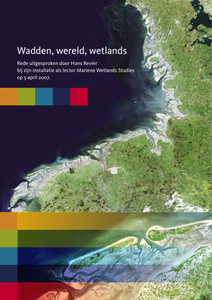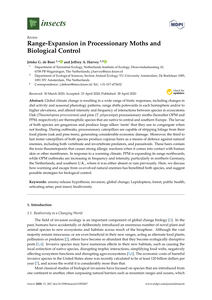Rivers all over the world are deteriorating in a fast rate. As a response, movements in the defence of rivers emerge and aim to restore and protect rivers. One of these defence strategies is to politicise fish to generate arguments for the protection of rivers, drawing from a fish-friendly river imaginary. The concept of river imaginaries describes that power is exercised through and by knowledge generated in truth regimes. In this poster presentation, we elaborate on two cases in which fishing people and their allies use a variety of truth strategies, resonating with specific fish-friendly river imaginaries. Both case studies are influenced by harmful mining and industry practices that pollute the river and wetland.The Dutch case study of the Border Meuse river reveals that the main argument to politicise fish is that infrastructural interventions and hydropower is killing and damaging fish. Through knowledge generating on the amount of fish-death and the aquatic state, a knowledge agenda is set and power is exercised to stop harmful river activities. The Colombian case of the Zapatosa wetlands reveals that the main argument to politicise fish is that fish is the main source of food. Through knowledge generating that focusses on re-learning from past artisanal fishing strategies and biocultural adaptation, a knowledge agenda is set and power is exercised to stop harmful mining practices. Although these river movements are using truth regimes to defend rivers, counter facts, counter norms, and counter agendas in the defence of harmful practices remain to exist.
DOCUMENT

This chapter is about the development of tourism in the Dutch Wadden Sea Region in combination with nature conservation. The main question is whether they have a common future. There are some future points stated:- Nature and landscape of the Wadden Sea are the main pull factors for the tourism development. - Future tourism development requires a clear strategy that is supported by various stakeholders- Raising awareness about the natural values results in more visitors and public support for nature conservation- The World Heritage status facilitates cooperation between local entrepreneurs and nature conservation organisationsOverall the conclusion can be drawn that, stimulated by the World Heritage status of the Wadden Sea and facilitated by a trilateral Sustainable Tourism Strategy, tourism development and nature conservation and can mutually benefit. Raising awareness about the natural values of the Wadden Sea will result in more visitors to the region and contributes to an emotional attachment to the protected area and public support for the conservation programs.
DOCUMENT

The international Wadden Sea is an estuarine tidal area along the North Sea coasts of The Netherlands, Germany and Denmark. It is characteristic for regions with sandy coasts and a medium tidal range. Fifty barrier islands separate the Wadden Sea from the North Sea, and an offshore transition zone to the North Sea. The tidal flats of the Wadden Sea form the largest unbroken stretchof mudflats worldwide. The present form of the Wadden Sea is still mainly the result of natural forces, although since the Middle Ages man has changed the Wadden Sea landscape by building dykes and reclaiming land. The Wadden Sea is an important nursery area for fish, a foraging and resting habitat for seals, and a foraging habitat for migrating waders. The Wadden Sea, including large parts of the islands, is a fully nature protected area and designated as a natural World Heritage site in 2009 (Wolff, 2013). The research group Marine Wetlands Studies at Stenden University is focusing on the sustainable development of tourism in the area. Current research has the purpose to get insight in to the effects of the World Heritage Status, in particular the natural values of the area, on future tourism development.
DOCUMENT

Managed realignment is the landward relocation of flood infrastructure to re-establish tidal exchange on formerly reclaimed land. Managed realignment can be seen as a nature-based flood defence system that combines flood protection by the realigned dike (artificial) and restored saltmarshes (nature-based). So far, research on coastal managed realignment is primarily directed to saltmarsh restoration on formerly reclaimed land. This study focuses on the realigned dikes. The aim of this research is to characterize realigned dikes and to indicate the characteristics that offer opportunities for nature-based flood protection. We categorized 90 European coastal managed realignment projects into two realigned dike groups: (1) Newly built landward dikes and (2) Existing landward dikes of former multiple dike systems. The second group has two subcategories: (2a) Former hinterland dikes and (2b) Realignments within summer polders. For each group we present the realigned dike characteristics of a representative case study. We consider that the use of existing landward dikes or local construction material make realignment more sustainable. From a nature-based flood protection perspective, the presence of an artificial dike is ambiguous. Our results show that targeted and expected saltmarsh restoration at managed realignment does not necessarily result in a greener realigned dike design that suits for combined flood protection with restored saltmarshes. We recommend coastal managers to explicitly take combined flood protection into account in the realigned dike design and steer the topography of the realignment site to facilitate nature-based flood protection and promote surface elevation increase seaward of the realigned dike in response to sea level rise. This makes managed realignment a nature-based flood defence zone for now and for the future.
DOCUMENT

This article examines whether calls for European ‘strategic autonomy’ in response to Trump’s rhetoric are qualitatively different from earlier disagreements in US-EU relations. By doing so, it re-assesses Geir Lundestad’s concept of “Empire by Invitation” to illustrate constraints for the development of such an autonomy especially in defence affairs. We argue that the US’s involvement in European defence affairs was never an invitation to ‘empire’, as the invitational aspect was based on consent. A process has been accelerated by the Trump presidency whereby this consent has shifted towards strategic estrangement. However, the article argues that the reactive and intergovernmental nature of EU foreign and security policy continues to hamper more autonomous policy planning in CSDP matters – different readings about cyclical disruptions in EU-US relations notwithstanding. The article finally discusses how the introduction of new CSDP mechanisms impacts on this debate. LinkedIn: https://www.linkedin.com/in/martijn-lak-71793013/
DOCUMENT

Rede uitgesproken door Hans Revier bij zijn installatie als lector Mariene Wetlands Studies op 5 april 2007.
DOCUMENT

Many coastal communities worldwide are facing challenges caused by increasing sea levels. However, urban development, population growth and industrialisation in low-lying delta regions persist. This includes the Netherlands and British Columbia, Canada. Both regions explore new and innovative flood risk and adaptation strategies by initiating nature-based solutions (NBS) pilot projects and integrating research and community initiatives. The aim of this paper is to learn from the experiences with these NBS pilots and support practitioners with insights and knowledge about the prospectives and implementation process of NBS. Our study takes a bird's eye view by diving into four NBS case study projects that try to enhance flood defence and quality of life while considering ecosystems and community values simultaneously. To better understand current initiatives on NBS, we first describe the historical trajectories of flood risk management and climate adaptation policy in both countries. Then we analyse two urban and two suburban case studies to identify and compare enablers and barriers that surround the implementation of NBS. We use the Pilot Paradox as a framework to reflect on the enablers and barriers, and to formulate recommendations for barriers that are common ground. We found that upscaling of the pilots forms an important challenge in both countries. We also found that Canada is interested in exchanging technical knowledge, experiences, and insights with other countries through the involvement of international researchers, consultants, and students in projects. Such collaboration between countries, communities, practitioners, and academics could accelerate the development of innovative climate adaptation strategies worldwide.
LINK
Global climate change is resulting in a wide range of biotic responses, including changes in diel activity and seasonal phenology patterns, range shifts polewards in each hemisphere and/or to higher elevations, and altered intensity and frequency of interactions between species in ecosystems.Oak (Thaumetopoea processionea) and pine (T. pityocampa) processionary moths (hereafter OPM and PPM, respectively) are thermophilic species that are native to central and southern Europe. The larvae of both species are gregarious and produce large silken ‘nests’ that they use to congregate when not feeding. During outbreaks, processionary caterpillars are capable of stripping foliage from theirfood plants (oak and pine trees), generating considerable economic damage. Moreover, the third to last instar caterpillars of both species produce copious hairs as a means of defence against naturalenemies, including both vertebrate and invertebrate predators, and parasitoids. These hairs contain the toxin thaumetopoein that causes strong allergic reactions when it comes into contact with humanskin or other membranes. In response to a warming climate, PPM is expanding its range northwards, while OPM outbreaks are increasing in frequency and intensity, particularly in northern Germany,the Netherlands, and southern U.K., where it was either absent or rare previously. Here, we discuss how warming and escape from co-evolved natural enemies has benefitted both species, and suggest possible strategies for biological control.
DOCUMENT

In this paper we describe one aspect of nature-based flood protection by foreshores in hybrid flood defences and discuss how foreshore ecosystem restoration can contribute to flood protection. Flood protection consists of flood prevention, by grey, green or hybrid defences, and flood impact reduction, by spatial planning to limit damage and crisis management to limit exposure. Reduction of flood impact is increasingly important because no flood defence system can provide 100% safety, especially with climate change and sea level rise. In this study we aim to understand and visualize the effect of foreshore characteristics (i.e., width, elevation and erodibility) on flooding impact in the hinterland of hybrid flood defences. As it is difficult to research real dike breaches, we do an explorative flume study to analyse the impact of a mimicked dike breach in the hinterland. Our physical scale model showed the presence of a non-erodible foreshore reduces flood damage in the hinterland. With regards to foreshore characteristics, mainly foreshore elevation and erodibility are important, while differing foreshore width has little additional influence. Already a narrow foreshore reduced flood impact in the flume hinterland. Our findings strengthen the appeal to integrate Nature-based flood protection by foreshores in hybrid flood defences. Grey flood defences can be turned into hybrid flood defences even if there is limited space for foreshore ecosystem restoration, for instance by managed realignment.
LINK
Coastal flood managers seek to anticipate future flood risk and as a result consider the adaptation of flood defences. Instead of crest heightening, dikes can be adapted to include hydrodynamic reducing vegetated foreshores to form a nature-based hybrid flood defence, for instance; at managed realignments. In this study we investigated the potential of vegetated revetments as a natural continuous connection between the realigned dike and restored foreshore. We applied the historic grass sod transplantation technique with the aim to improve our understanding of the strength of a transplanted sod revetment. In Living Lab Hedwige-Prosperpolder, dikes were available for in-situ experiments during managed realignment preparations. We transplanted grass sods and studied erosion resistance after one growth season. Our results show transplanted sod vegetation continued to grow and started to attach to the clay layer. While erosion occurred under extreme wave impact and overflow, the sod pulling method revealed individual sod strength. In conclusion, sod transplantation is a good technique to source local material for green realigned dike revetments. A vegetated dike revetment can hereby create a natural continuous connection between the realigned dike and foreshore, which benefits flood protection as well as flora and fauna.
LINK